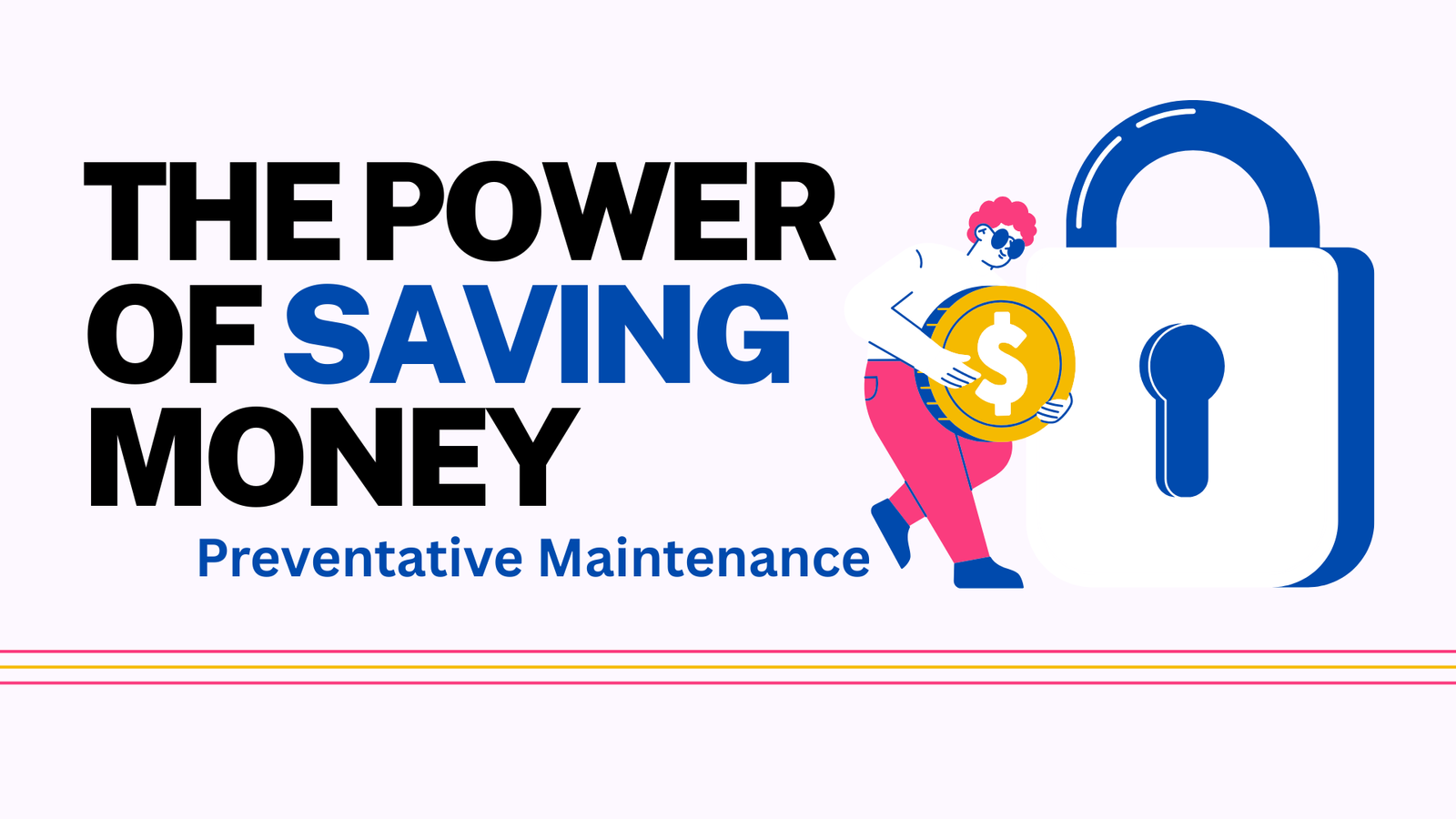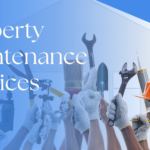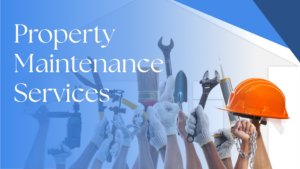Preventative Maintenance: Saving Money in the Long Run
You already know that a car needs regular services like oil change, tire rotation, engine service, etc., but what you don’t know is that your home also needs the same commitment and care to stay functional and look its best. Just like most people, it’s easy for you to overlook regular maintenance, thinking you still have time, or it’s all good cause everything looks okay. Preventive maintenance is an integral part of homeownership, as your home is your first line of defense that safeguards you from any sudden or unforeseen harm. In this blog post, we will explore how you can stay on top of your home maintenance by catching problems early and how you can save significant amounts of money in the long run. Preventive Maintenance is a proactive approach to maintaining facilities of daily life and Equipment that can lead to major and significant cost savings in the long run of life, that can prevents major breakdowns, reducing the need for expenses over the lifespan, which can improve efficiency. In very simple words, preventive maintenance, which is often known as preventative maintenance, is a different procedures and techniques, we can use and make a long-term money safe.
Basics of Preventive Maintenance:
Preventive maintenance serves as a targeted plan consisting of actions that help prevent any major issues by staying proactive and on top of things. One of the key elements of this type of plan is to preserve the operational state of all the equipment involved in a building between major servicing intervals. Some of the involved tasks include:
- Inspection for any wear, damage, misalignment, or leaks.
- Cleaning out dust and debris that may clog the equipment, which can affect its function.
- Lubrication of equipment to reduce friction and better working lives.
- Tighten loose parts or fittings to ensure proper, optimal operation.
- Operational tests to verify performance and identify irregularities.
- Replacing parts that are near or beyond their service life.
- Calibrating instruments or systems to maintain accuracy.
- Documenting maintenance logs for compliance and tracking.
What is Preventive measurement:
Preventive measures are some actions to perform on our things to avoid any unexpected problem or challenge, like scheduling inspections, cleaning, and designing different replacements, to prevent them from any unexpected problem before their occurrence. This has a severe contrast and difference to Reactive maintenance, which is always done after the occurrence of an issue.
Here are some examples of preventive measures;
- Regular checks and maintenance of industrial machinery
- On the Server, checking of system logs and software updating
- Vehicle’s regular oil change
- Replacing the filters of HVAC systems
Types of Preventive Maintenance:
To understand all about preventive maintenance, let’s delve into its different types with respective examples to make it more comprehensible for you. Different types of preventive maintenance are as follows:
- Time-based Maintenance
- Usage-based Maintenance
- Condition-based Maintenance
- Predictive Maintenance
Time-based Maintenance
As the name suggests, time-based maintenance has to do with maintenance at specific time intervals. It consists of a well-devised strategy scheduled at predetermined intervals. Regardless of assets or equipment condition, preventative maintenance aims to undergo activities that help prevent future failures and increase its reliability. It’s beneficial to create a schedule monthly or annually, as per the manufacturer’s inspection and cleaning recommendations. This can help you stay on track. Examples of interval-based maintenance include tasks like:
- Air conditioner servicing every month in summer
- Restoring salt content in soft water systems
- Cleaning vents biannually as per health standards
Predictive Maintenance
Predictive maintenance is primarily about retrieving data after tracking historical trends, which enables accurate failure predictions. Predictive maintenance is based on real-time equipment condition and does not follow a schedule like preventative maintenance. The key element of predictive maintenance includes smart asset management, thus low operational costs, low downtime, and optimal resource allocation. Giving the owners the luxury to act only when needed, all the while ensuring extended equipment time and high operational efficiency. This type of maintenance includes tasks like:
- Continuous tracking of equipment health using digital diagnostics
- Identifying signs of degradation through tools like ultrasonic testing
- Failure prediction models built to estimate the Remaining Useful Life (RUL) of components
- Integration with maintenance systems for reporting and automation of workflow
- Using vibration and acoustic emission analyses on rotating and revolving equipment to predict equipment failures
Usage-based Maintenance
This type of maintenance is correlated with equipment usage. Knowing how to prevent future equipment failure by staying on top of proper care through usage-based preventive maintenance will ensure long-lasting use of your equipment. For instance:
- Schedule maintenance tasks when contamination levels reach a critical point in a hydraulic system
- Machine oil change after it has been used for a set number of hours
- Replacing machine parts after they have reached their life before it causes any operational difficulty
Condition-based Maintenance
Condition-based maintenance is all about finding maintenance activities and needs by condition monitoring of your most crucial assets. The main approach here is devising different maintenance techniques to prevent future failure based on the condition metrics of a particular part of equipment. For example:
- Using temperature and vibration sensors to detect any functional anomalies
- Other sensors, like an Infrared sensor, that detect if the equipment is operating above the set temperature level
- Using real-time information about the equipment to prevent any future failure
Preventive maintenance offers lots of benefits by extending equipment lifespan, reducing overall cost, and minimizing downtime. It also minimizes unexpected breakdowns, enhances safety, and improves operational efficiency.
Preventive Maintenance Checklist for Australian Homes
| Area | What to Check | Recommended Action | Frequency |
| Roof | Fix leaks, clean aerators, and check for rust | Replace tiles, clean gutters, seal leaks | Quarterly, especially in autumn |
| Gutters & Downpipes | Debris, blockages, sagging | Clean out leaves, secure loose fittings | Quarterly, especially autumn |
| Windows & Doors | Cracks, broken seals, drafts | Seal gaps, repair locks | Seasonally |
| Plumbing | Leaks, water pressure, corrosion | Cracks, paint flaking, or any signs of water damage | Twice a year |
| Hot Water System | Rust, odd noises, water temperature | Flush tank, inspect valves | Annually |
| Air Conditioning | Dirty filters, airflow issues | Clean/replace filters, service unit | Before summer/winter |
| Smoke Alarms | Function test, battery check | Test monthly, replace batteries | Monthly / Yearly battery |
| Pest Control | Signs of termites or cockroaches | Apply treatments if you have the right product or contact pest control | Every 6 months |
| Exterior Walls | Overgrowth, branches near the roof | Repaint, seal, fix damage | Annually |
| Driveway & Paths | Cracks, loose pavers | Pressure clean, reseal, fix damage | Annually |
| Garden & Trees | Pressure clean, reseal, and fix damage | Trim trees, clean green waste | Seasonally |
Preventative Maintenance Checklist for Australian Commercial Buildings
| What to Check | Recommended | Recommended Action | Frequency |
| Roof & Flashing | Seal leaks and cracks, inspect flashings, and schedule repairs based on your findings | Clean coils and closed spaces, replace any worn-out filters, and calibrate of thermostats | Every 6 months |
| HVAC Systems | Airflow, filter condition, energy use | Burn marks, loose wires, and breaker function | Quarterly / Seasonally |
| Electrical Panels | Fire alarms, dysfunctional extinguishers, and exit lights | Inspect alarms, service extinguishers, and test exit lights | Annually |
| Emergency Systems | Test breakers, secure connections, and call a licensed electrician | Fix leaks, clear and clean drains, and replace damaged parts | Monthly / Quarterly |
| Elevators & Lifts | Noise, button function, emergency systems | Schedule inspections and servicing per legal requirements | As per code / Monthly |
| Plumbing Systems | Leaks, drainage speed, visible pipe wear | Lock function, seal integrity, and operation | Biannually |
| Windows & Doors | Adjust hinges and door knobs, repair seals, and replace any cracked glass | Camera function, motion sensors, and access systems | Quarterly |
| Interior Paint | Infestation signs in storage, break rooms, and basements | Repaint and refurbish common areas | Annually |
| Pest Control | Peeling paint, stains, and damage | Professional inspection and treatment | Quarterly / As needed |
| Security Systems | Replace bulbs, test motion sensors, and timers | Run system diagnostics and update software | Monthly |
| Lighting Systems | Burnt bulbs, faulty sensors | Line visibility, surface cracks, and lighting | Monthly / Quarterly |
| Parking Area & Exteriors | Leaks, drainage speed, and visible pipe wear | Repaint lines, repair potholes, replace faulty lights | Annually |
Other Benefits:
- Better Resource management
Using preventative maintenance, we can restore better management, as it has to be on schedule.
- Increased Customer satisfaction
By giving the best production and manufacturing, and having the best service system through preventive Maintenance, we can make customers happy and reliable.
- Improved liability
If the system is good and customers are happy automatically, it improves the liability of both the system and customers.
- Improved Compliance
By giving the services of preventive Maintenance, we can improve compliance.
Here we have a cost comparison between Preventive Maintenance and Reactive Maintenance for a five-year Maintenance period of a small manufacturing facility.
| Year | Preventative Maintenance | Reactive Maintenance |
| 1 | $5000 | $3000 |
| 2 | $10000 | $6000 |
| 3 | $15000 | $9000 |
| 4 | $20000 | $12000 |
| 5 | $25000 | $15000 |
| Total | $75000 | $45000 |
There should be several practices to do to prevent any severe damage for Preventive Maintenance, some are below;
Use of a Computerized maintenance management system
- Create a maintenance Schedule
We can provide better service of preventative maintenance in a computerized system to create a schedule of maintenance.
- Conduct Regular Audits
In the use of computers, we should conduct regular audits to make them better and more reliable.
- Write down Everything
Being very professional, we should write down every single step of preventative maintenance in a computerized management system.
- Keep a Trained Staff
To make it better and more reliable, and satisfy the customer, we should hire very professional and trained staff to do their duties well.
Here are some Industries that can give a high pay off for preventative maintenance;
| Industries | Payoff Benefit for Preventative maintenance |
| Transportation | Breakdowns Fewer and Efficiency in Fuel |
| Health Center | Compliance of equipment and patient safety |
| Software House | Reliability of time and data Security |
| Manufacturing | Longer machine time and less downtime |
| Facilities | Compliance with equipment and patient safety |
Final Thoughts
To conclude, instead of waiting for something to break (which usually happens on a very busy day), preventative maintenance involves routine inspection and servicing equipment, so it doesn’t break in the first place, which seems out of the blue. But it’s mostly random; tiny fixes can turn into hefty repairs. Phase one of this type of maintenance is identifying fixes that can turn into costly bills if left unchecked. Phase two consists of addressing potential issues by doing the necessary repairs and fixes. I have devised checklists for you that can help you know which tasks are safe enough to be done at home by yourself and which ones require proper professional care. Don’t know who to contact? Book a free demo with All Areas Maintenance and get on top of your maintenance game.
Not only does preventative maintenance keep your operations functional, but it can also help you yield around 500% ROI and save 12-18% of costs compared to reactive maintenance. Additionally, preventative maintenance can decrease unplanned downtime by over 18% and result in over 83% fewer defects and lags in production.
FAQs
Is preventive maintenance cost-effective as compared to reactive maintenance?
Yes, it sure is. As in preventive maintenance, steps are taken to prevent serious issues like mold on your ceiling or system failure. While in reactive maintenance, you fix it when it needs fixing, which can cause costly repair bills depending on the severity of the damage.
Which tasks can be handled at home without a professional?
DIY tasks like touch-ups, gutter cleaning, checking smoke alarms, etc., can be done at home by you. But tasks that involve electrical, roofing, or gas must be taken care of by certified professionals.
What happens if you do not take preventative maintenance seriously?
If you’re not taking it seriously, then you can expect higher utility bills in the future and reduced safety in general. You can also miss out on some potential insurance claims.
Will preventative maintenance help with the resale value of my property?
Absolutely. A documented maintenance history reassures buyers and can help pass building inspections with ease. Making your property beautiful inside and out.
Can preventative maintenance be done annually?
As advised by professionals, you should do seasonal maintenance at least 4 times per year. On the other hand, HVAC or roofing systems may need more frequent attention and care. It also depends on the climate conditions that your property faces over the year.
All Areas Maintenance provides a range of maintenance services. Some specialised services are carried out by appropriately licensed and insured independent contractors, in accordance with applicable laws and regulations.





